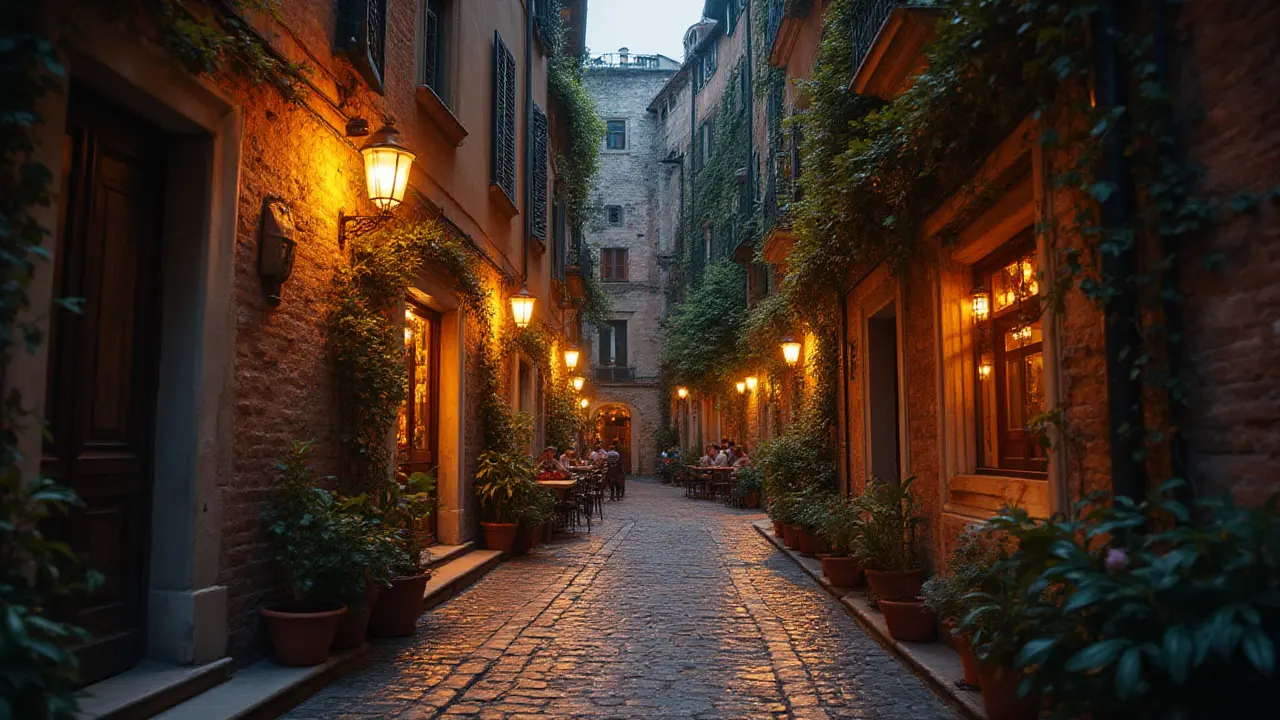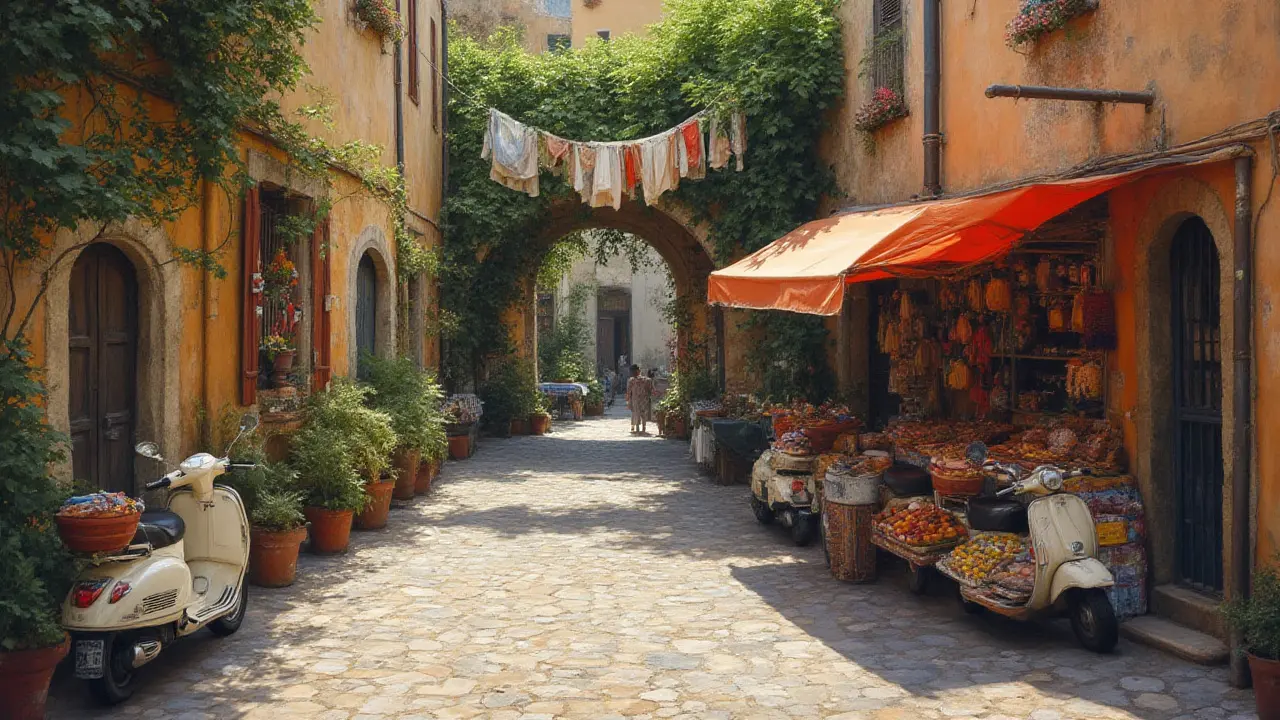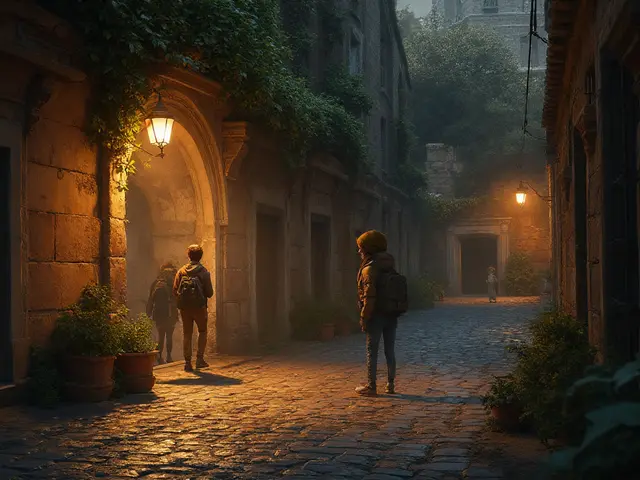
How many times have you strolled through a city and realized you’re just scratching the surface? Rome hits you with big-ticket marvels—yes, you’ve seen the Colosseum and tossed a coin in the Trevi. But real Rome doesn’t live on postcards; it hides in alleyways, behind unmarked doors, and under your feet. If you want to come home with more than neat photos, dig in. Rome’s secrets are begging for bold explorers.
Exploring Rome Beyond the Usual Landmarks
Rome can feel like a maze built by showmen and pranksters. Sure, the Pantheon touches you, and St. Peter’s takes your breath away, but most people crowd the same squares, elbow their way through the Vatican, and call it a day. The city is more than its grand facades. Want to see how locals savor their city? Venture a little further. The Testaccio neighborhood tells more about Roman nightlife and food than any guidebook can. Head to the ancient slaughterhouse-turned-cultural hub, Mattatoio, where art exhibitions morph into open-air concerts. Here, students, artists, and old-timers rub elbows over paper cones of fried artichokes.
Villa Torlonia offers another curveball. Mussolini lived here, but now its lush gardens hide an oddball museum to Casina delle Civette—Rome’s House of Owls, dripping in stained glass and Art Nouveau weirdness. Around Monti, vintage shops, street artists, and pocket bars show a funkier side to Eternal City style. The Coppedè district is all Gaudí-gone-Roman, a mix of Art Nouveau houses, fairy chimneys, and mosaics you’d never expect here. Nobody takes tour buses to Garbatella, yet its pastel villas, pedestrian courtyards, and slow afternoons are the closest you’ll get to Roman family life without a cousin in town.
Head underground to the Basilica di San Clemente, a layer cake of history. Down one flight: a 12th-century church. Below that: a fourth-century basilica. Keep going and you end up amid ancient cult altars—each level with its dusty stories, graffiti, and ancient coins fused to stone. For proof that Rome never tires of secrets, duck into Trastevere’s Orto Botanico, tucked behind bamboo screens, where peacocks strut between cypress trees and herbalists snip rosemary that winds up in local brews.
Every step in this city is a bet: peel away from the main drag, and you just might stumble onto a 400-year-old pastry shop or a puppet theater run by the same family for six generations. It’s all about curiosity. If you’re hungry for more than tourist Rome, stay street-level, put Google Maps away, and trust the smell of fresh espresso or the sound of laughter drifting from a vine-covered piazza.
Unexpected Tastes and Local Eats
If you think grabbing a gelato on Via del Corso or eating spaghetti at a trattoria means tasting Rome, hold up. Romans are fiercely picky eaters, and their food scene changes from block to block, season to season. Sure, Cacio e Pepe and Carbonara deserve their reputation, but let’s talk lesser-known favorites that locals swear by. Take supplì, a Roman twist on arancini; crisp rice balls filled with ragu and cheese. You find the best ones from hole-in-the-wall spots in Testaccio or food stalls in Mercato di San Cosimato, where grannies buy ingredients with a flair only Romans carry.
Now, pizza in Rome isn’t one-size-fits-all. There’s pizza al taglio (by the slice), which is lighter, crustier, and built for people-watching along busy sidestreets. Gabriele Bonci’s Pizzarium is practically a pilgrimage for foodies, with toppings changing by the hour. If you’re into bold flavors, try filetti di baccalà—deep fried salt cod—at places like Dar Filettaro near Campo de’ Fiori. Each crispy bite tells a salt-sprayed, seafaring story.
Markets here are experiences, not chores. Campo de’ Fiori buzzes in the early morning; vendors flip artichokes, slabs of cheese, and spill gossip between orders. Mercato Testaccio is unbeatable for sampling Roman street food, from tripe sandwiches to juicy porchetta. Salad lovers, chase the beloved puntarelle—crunchy chicory spritzed with anchovy dressing each spring. For dessert, forget touristy gelato chains. Stop at Gelateria del Teatro for flavors like rosemary honey-lemon or ricotta-fig, with the chef experimenting daily. Or grab maritozzi, sweet cream-stuffed buns that Romans devour for breakfast with a bitter coffee shot.
Eat like a local: go early, ask what’s fresh, and don’t fear a bit of grease or mess. Most restaurants outside of tourist zones offer daily specials based on what came in that morning. If you want a table in popular trattorias (especially Trastevere on weekends), book ahead—but for the truly spontaneous, try family-run taverns in the Jewish Ghetto or San Lorenzo. There, you’ll see neighbors arguing football, old-timers dunking bread into offal stews, and plates that never look Instagram-ready but taste unforgettable.

Unusual Experiences and Out-of-the-Box Adventures
So you’ve seen the Vatican, dodged selfie sticks at the Spanish Steps, and waited in line for the Colosseum. Now shake things up. Rome thrives on experiences hidden in plain sight. Secret keyholes are very much a thing—peek through the Aventine Hill’s Priory of Malta for a view that perfectly frames St. Peter’s dome, a trick of perspective that leaves first-timers giggling. Next, step into the eerie Campo Verano Cemetery, a gothic world where local families still decorate mausoleums with family photos and flowers, and sculpted angels watch over silent lanes.
Want a dose of adrenaline? Rent a Vespa, but ditch the tourist routes. Glide along the Appian Way, one of the oldest roads in existence, where ancient tombs flank wildflower meadows, and you’ll pass local cyclists on Sunday rides. If you’re lucky, you’ll stumble onto catacombs—miles of narrow passageways carved beneath Rome, lined with frescoes and stories of the city’s earliest days. Some, like the Catacombs of San Callisto, offer candle-lit tours after dark where whispers bounce off cool stone.
Sometimes, the weirdest spots are the most memorable. The Museum of the Souls in Purgatory holds relics and “scorched” handprints believed to be left by spirits reaching out from beyond. Or hunt for the talking statues of Rome, where locals once left anonymous messages poking fun at politicians—Pasquino, near Piazza Navona, still wears graffiti and a grumpy scowl. If you’ve got a passion for the mystical, venture to the Protestant Cemetery in Testaccio to visit the graves of Keats and Shelley, surrounded by swooping green parrots and ivy-draped marble.
In summertime, Roman nights hum with pop-up cinema in ancient courtyards, jazz in lantern-lit gardens, and poetry readings along the river. Some venues never advertise; you’ll get in by asking a nearby bartender or recognizing a handwritten paper sign taped to an old door. For the truly adventurous, there’s the Rome Underground movement—hidden dance parties in abandoned stations and industrial lofts. Maybe you’ll end up sipping amaro with strangers as the sun comes up behind Monte Mario’s pine trees.
Practical Tips: Getting the Most Out of Rome’s Secrets
Timing is everything in Rome. Unlike places with a 9-to-5 pulse, the city stretches and contracts with the holy calendar, public holidays, and weather that can swing from rain in the morning to sunbaked streets by lunch. Visiting in the shoulder season (late spring or early autumn) means you dodge crowds, snag deals, and get locals at their friendliest. The city’s metro system is simple but limited—buses cover far more ground, but don’t expect punctuality. If your feet are up for it, Rome is best seen walking, as every turn offers a new story or snack. But watch out for uneven cobblestones and sneaky scooter traffic.
Money-wise, cards work almost everywhere, but small, family-run shops and markets still prefer cash. Public water fountains—called nasoni—are everywhere and spout cold, drinkable water, a lifesaver under summer sun. Want a local trick? Roman lines (queues) are creative. People hover instead of queuing neatly; want to be served? Eye contact counts more than order in line. When it comes to safety, Rome is as laid-back as big cities come, but pickpockets love distracted tourists in busy spaces. Keep your bag zipped and be wary of the “friendship bracelet” scammers near main attractions.
Accommodation? Avoid the expensive city center for better character and value in Prati, Pigneto, or Trastevere—these spots offer lively evenings, superb local eats, and easy access by tram and bus. Language barrier? Basic Italian goes a long way, but Romans switch to English when they see you trying. For day trips, local trains can get you to Ostia Antica’s ancient ruins or the Castelli Romani lakes in under an hour—perfect when the city boils in July.
Here’s a data snapshot for your planning:
| Attraction | Average Wait (mins) | Best Time to Visit | Entry Fee |
|---|---|---|---|
| Colosseum | 45 | Pre-9am | €18 |
| Villa Torlonia | 10 | Late Afternoon | €8 |
| Catacombs | 20 | Before Noon | €10 |
| Basilica San Clemente | 5 | Early Morning | €10 |
| Campo de’ Fiori Market | 0 | 7-10am | Free |
And here’s one golden rule—don’t race through. Rome is a city that flirts back if you slow your pace, say yes to the extra glass of wine, and follow your nose, not your smartphone. You’ll stumble on the best secrets not by planning, but by wandering into them—sometimes literally.



